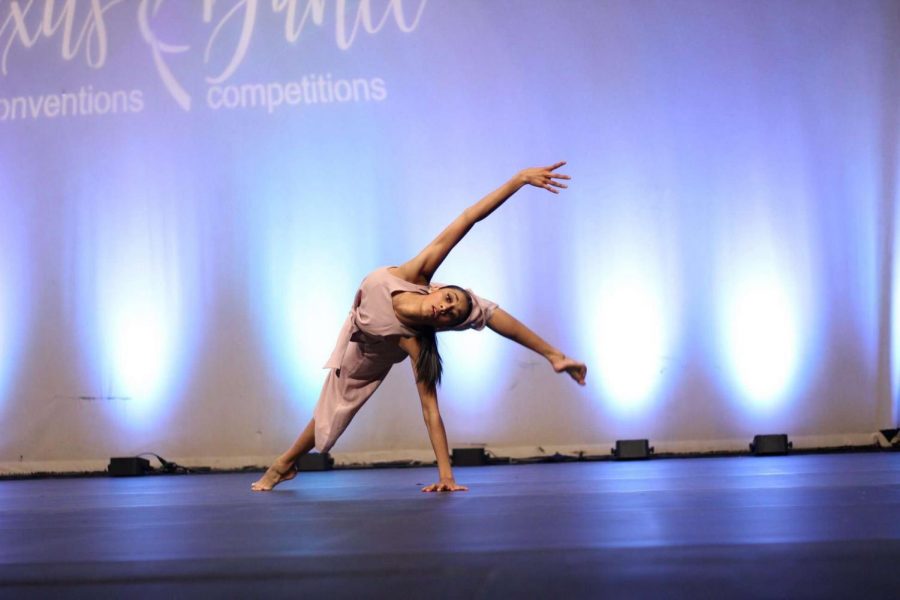Dance Steps & Big Checks: An Insider View into the Business of Competition Dance
January 11, 2019
Up until recently, the world of competition dance and those involved in it had been largely unknown to the general public. The popularization of TV shows like So You Think You Can Dance and Dance Moms have increased awareness of the community. Simultaneously sparking interest in many young girls and boys to experience the world of dance for themselves.
Commercial and competitive dance has boomed with the rise of social media and is now a critical piece of TV shows, movies, and music culture. Young dancers in the competition circuit have become celebrities in their own right, acquiring hundreds of thousands of followers as well as advertising deals based solely off of their abilities. Competition dance has evolved into a thriving industry, allowing studio directors, choreographers, teachers, costume designers, and dancers to make healthy profits, and the market is only growing.
On the surface dance competitions seem simple. A singular dancer or a group of dancers takes the stage. A small panel of judges sits at the front and scores the number based off of various criteria, including technique, performance, and overall appearance. This process repeats until all entries have had their chance on stage. The scores are tallied and awards are presented to the top scoring numbers. But behind each piece that graces the stage lies a hidden process that is largely unrecognized.
Months before competition season begins, dancers recruit choreographers to create a piece for them. Choreography prices widely differ from hundreds to thousands of dollars depending on the popularity and prestige of the choreographer. Studio directors often pay for all the accommodations it take to bring a choreographer from their home base to the city the studio is located. This includes airplane tickets, hotel rooms, rental cars/ taxi rides, and meals.
After the piece is set, dancers will practice for months to perfect the technique and style of the dance they will perform repeatedly during competition season. Dancers attend extra classes daily in a variety of styles to improve their overall ability and often invest in private lessons to help with their specific needs, all of which cost anywhere from twenty dollars to a few hundred dollars each.
Next, dance purchase costumes to perform in. A premade costume from a catalog can cost anywhere from thirty dollars and a few hundred. Often dancers opt out for custom costumes, with a typical base price of a couple hundred dollars and can peak into the thousand dollar mark.
After rigorous months of preparation dancers finally reach competition. Dancers and their families travel to different cities and states where the competitions are held, staying in host hotels and paying for flight tickets to reach their destination. The events are complete with hundreds of dollars worth competition and class fees that are paid in order to participate. “Most of our leisure funding and vacation time is spent going to dance competitions,” says Dawn Lafrades, a Boise dance mom.
Also keep in mind that a average competition dancer can have one or a dozen dances entered per competition and in a year attend numerous events. It is then easy to see how families pay tens of thousands a year for their children to be active in the competition circuit.
This financial commitment is met by an equally strong time commitment. Young dancers devote their lives to dance from ages as young as three years old, often times choosing to homeschool in order to free up hours to train and increase schedule flexibility for travel. Training as a young dancer often resembles a full time job. Their lifestyle, including diet and exercise regiment, revolves around success in the competition world.
These dancers devote their livelihood to the art and typically wish to pursue dance as a career. The competition circuit attracts top dancers and professionals in the industry, connecting them on a personal level that can often develop into future jobs opportunities. If a choreographer is hiring for a position as a backup dancer on an international tour, they may have a dancer in mind that they have see repeatedly through years in the competition circuit. Dancers that grow up competing build relationships with teachers that have watched them grow and develop as artists. Those lucky enough to catch a break in the dance world are often benefited by connections which can be harvested through the competition circuit.
The idea that your future may be dependent on training that begins in your most formative years of life adds a new level of pressure to young dancers. “ I would definitely say there is this level of pressure that’s pretty heavy on young dancers. They are still very young and malleable and so we push them and push them saying it’s “best for them” or they’ll regret it if they don’t. I think it comes with pros and cons for sure,” says Violet Osmanson a sixteen year old competition dancer in Boise. “There is this discipline and self awareness that comes to us. However, we are joining into an activity where our very being is up for judgement based on opinions,” Osmanson explains.
This criticism is a major part of the dance world can either fuel a young dancer or damage a growing self esteem. “Performing is purely about how you look and the way you present yourself to a crowd or group of people. If the way a person presents themselves does not meet the standards then a person can become hard on themselves, due to one little mess up or mishap.” reveals 15 year old competitive Boise dancer, Ananya Adhvaryu.
Criticism can also pave the way for leaps in self development not only in dance but in character. The ideals of hard work, goal setting, and perseverance are imbedded in competition culture. Young children can learn invaluable life lessons from dance, as well as utilize the art form as an emotional outlet. Dance contains a mixture of athleticism and artistry that is addictive as Adhvaryu describes her drive to compete. “I like competition dance, just because it lets me showcase myself and expose myself to different people and judges. Although dance is such a critical art, I love being able to constantly strive for perfection and competition dance let’s me do that.”
Despite the commercialism that floods competition culture, the competition dance circuit is keeping the art of dance alive, as well as raising the standard of work that is being produced. The community is all inclusive. Any person that wants to dance has the opportunity to compete in a competition, diversifying the scene and adding variety and innovation to the art. The groundbreaking work that shakes the world of dance now has a wider audience and more phenomenal dancers are gaining the recognition they deserve. The competition world harvests an environment that demands the best of the best to be presented and dancers evolve and improve to keep up with that pace. Mainstream media owes its dance influence widely to the competition circuit and dance now has a global stage unlike ever before. Behind the big business of the dance industry, there remains raw and passionate artistry that is transferred from generation to generation through the realm of competitive dance.



